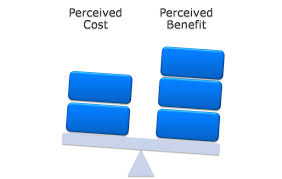Taking Our Medicine — Improving Adherence in the Accountability Era, by Lisa Rosenbaum, M.D., and William H. Shrank, M.D.
(NEJM Link)

Accountability tends to be a good thing. Those not held accountable for their actions lack an important feedback loop, and we all need feedback. Feedback in the healthcare business has moved more and more to financial rewards. That can be OK assuming the financial rewards to those delivering care to patients is aligned with what patients actually desire. Under ideal circumstances those delivering care will be rewarded when they add value to patients, not just extract value. However, there is a problem as summarized by the authors:
Our willingness to care for patients has never depended on their willingness to do what we say. But an estimated one third to one half of U.S. patients do not adhere to prescribed medication regimens.

The problem is simple. We view that these patients have a problem that requires action, the action being pharmacological intervention. They do not agree as evidenced by their actions in that they fail to take their prescribed medications. They are non-compliant with our desires. As Clayton Christensen noted in the Innovators Prescription, we are trying to sell a product to patients that patients don't want. In the new era of accountability, physicians will be punished for patient non-adherence to treatment regiments.

As I see it, we have two choices. We either convince patients that they should want we are selling or we should move on toward offering them something they will value. It is a simple marketing problem which salesman have been dealing with for millennium. While those of us within the health care profession may be put off by this perspective, it is exactly what we are doing: we are engaged in selling products to the public. Like any product sold by a merchant, health care products may add value to patients lives or not not add value.

Step outside of the usual health care we know what is best for the public frame of mind and listen to the message and the tone of this NEJM piece. It is more that a bit off putting. Can you imagine reading a similar piece in a trade journal in the insurance industry. I can picture this now as an indignant insurance salesman writes a piece lambasting the non-compliant public for failing to purchase whole life policies. But wait a second! Is this really an relevant comparison? More than one author has weighed in on this argument and has claimed that
most people fail to benefit from purchasing whole life insurance products.
Lets think about this from the perspective of NNB (number needed to buy). From a perspective of personal probability of benefit, most people may not benefit from purchase of whole life insurance, but are the numbers any worse than the number needed to treat when it comes to statins. Treating asymptomatic conditions with medical treatments (such as statins) to avoid future bad outcomes is very much like buying insurance. Pushing such interventions is very much like pushing whole life insurance.
I am sure that we could frame (market) the data in such a way to enhance adoption (purchase) of the product(s) we are selling. Any approach which perhaps exaggerated the benefits of the product we are selling to the public would likely increase their adoption. If we were selling products other than those in the health care realm that would likely be viewed as being unscrupulous and conflicted. For any specific person taking a lipid lowering agent is not likely to result in any person benefit. However, if reward metrics for individual providers use compliance metrics to allocate financial bonuses to physicians there is an obvious conflict. What is a reasonable estimate of adoption of any recommended intervention assuming the options were presented in a truly non-biased fashion and most of those deciding will derive NO benefit?

We need to understand that not everyone will or should want to buy what we are marketing. The rest of the commercial world has come to grips with long ago. They do not criticize their customers when the customers don't see value in their products. They simply work harder to find what their customers need and want.